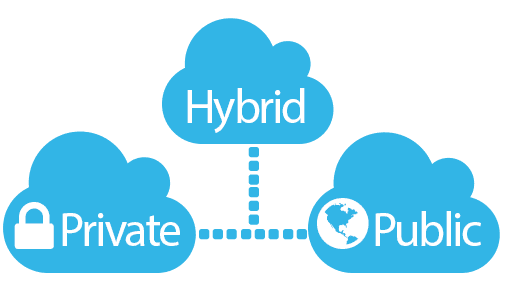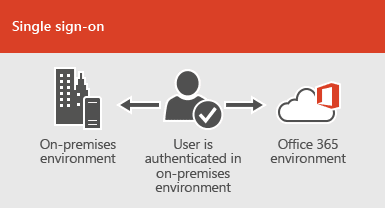You might call it anything you want—consumerization, democratization of IT or the evolution of cloud but the fact is that both endpoint possessions and IT structure are stirring up things, forcing CEOs and CTOs to think outside their realm of customary roles…
Bring Your Own Device (BYOD) trend led to Bring Your Own App, driven fundamentally by first round of file sharing apps that clients carried into the business. The current emphasis of cloud migration has moved more directly into the epicenter of IT concern, with email moving from on-premises to cloud framework. The finest example of this trend through business size and topographies is Microsoft Office 365. Some of the advantages from Office 365 are accessibility, scalability, user easiness, global redundancy and easy mobile access. Even non-IT enterprises are taking-up Microsoft Office 365 as the smarter, more ROI-driven choice.
Once empowered with Microsoft Office, you get anytime and anywhere data access, across nearly any device. Even establishments with no history of using Microsoft or disruptive technologies like Big Data will realize that cloud-centered delivery platforms are definitely more agile. Within this environment, Office 365 has a lot to offer in terms of extensiveness, safekeeping, provisioning for hybrid applications and more. Office 365 can be acquired directly from Microsoft or through a service provider. Before adopting Office 365, every stakeholder involved in business decisions needs to know about expected benefits. When contemplating deploying Office 365, some apprehensions are natural and we are systematically dissecting each of these:
1. One Size Does Not Suit All
Office 365 seems like a single entity but actually, it utilizes different functionalities to brew something unique. This includes access to cloud-based Office Online including exposed versions of principal applications such as Microsoft Word and Excel—literally the lifeline of even the humblest business set-ups today. Beyond these, Office 365 packs applications with diverse uses. You need to make a selection. There are many alternatives within the Office 365 environment where assessing them comprehensively can be very productive. What seems like a standard Office 365 offering has much more to offer, usually without more expenditure—you just need an IT solutions provider to help you make the right choices.
 2. On-Premise, Cloud and Hybrid
2. On-Premise, Cloud and Hybrid
Companies can opt for a mix & match approach for cloud and on-premise capabilities. You can become a ‘hybrid’ moving some Office 365 customers to the cloud while keeping others ‘on-premise’ for amenability or functioning causes. The users will not be able to identify the dissimilarity, and get to use the same feature-rich apparatus across on-premise and online servers.
3. Getting Your Infrastructure Ready
Moving the services to cloud certainly intensifies the load on your network substructure. The end users are accustomed to high performance of locally provided services. When moving local services to cloud-held Office 365, it’s imperative to forestall performance issues and complications arising during and after migration. Here your service provider plays an important role in bringing together an extensive range of resources, ensuring that the right network infrastructure is in place.
 4. Establishing Office 365 Environment
4. Establishing Office 365 Environment
When you are shifting to Office 365, there are a few key points you need to know. This shift involves setting up of accounts, obtaining permissions for access, integrating files and transitioning the existing premise-based solutions. All these steps are not very complicated and hence most Office 365 Providers consider onboarding as a “self-service” action that the consumers need to complete themselves. However, some customers ask their service providers to deliver definite support opportunities through comprehensive Managed Onboarding service.
5. Transferring Your Email
Email is probably the first of Office 365 applications that enterprises completely shift to the cloud. The more challenging part is migrating email data, third-party utilities, spam filter settings, server permissions and more. It’s at this point in the process where network bandwidth issues can be a problem: an organization with low bandwidth and a lot of data to move can experience performance disruptions. Specialized migration tools can ease this process to some extent and an experienced service provider like INFINIT can make the transition much simpler.
6. Custom Integrations
Though Office 365 applications are self-sufficient, but with managed service providers like us these can be integrated with third-party tools. These third-party solutions from topnotch providers complement the Office 365 offer. Some examples are Enterprise Archiving, Enterprise Mobility Management, and Desktop-as-a-Service.
7. Compliance and Agreements
Security concerns keep bothering the organizations—generally healthcare and business services from moving to the cloud. But now such concerns are reducing. Microsoft is a pioneer cloud-based productivity service that implemented security frameworks based on International Standards Organization (ISO/IEC27001:2005). Office 365 is also contractually dedicated to the HIPAA Business Associate Agreements. Furthermore, Exchange Online includes inclusive, cohesive archiving and e-detection gears that can search complete Office 365 structure ensuring that consumers practice the conceivable ways to meet compliance and governance requirements within a single infrastructure.
8. Support
Continuing account support is an important concern in the employment of Office 365. This ongoing account support is a crucial factor that brings organizations to deploy Office 365 through specialized service providers. With such a support, issues can be solved by means of phone, email and on the Web using a customer-facing portal.
9. End Point Arrangement
In case of a power outage or other unpredicted events, holding a co-sited IT infrastructure can speed-up the business recovery. Co-location cannot be termed as whole-sole business endurance or a disaster recovery solution. It does not include reclamation methods and any accountability in the event of a disaster. But, Co-location is surely is an important initial footstep in creating an appropriate recovery solution for your firm. The Service providers work with colocation clients to achieve the same.
10. A Peek into Future
Adopting cloud technology by the firms has become somewhat a customary trend, but the addition of cloud resources to end-user personnel is still budding. Software-as-a-Service resolutions have flagged the way for this conversion, and firms like Microsoft are pushing the edges. With better competences like the capacity to improve the “social dimension” across several assignments including document management and file storage, service providers are becoming more open to concerted operations.
Infinit Consulting carries this tale to a full circle by adding relevant services around an outstanding infrastructure that allows establishments to take complete benefit of Office 365 now—and in coming future.
